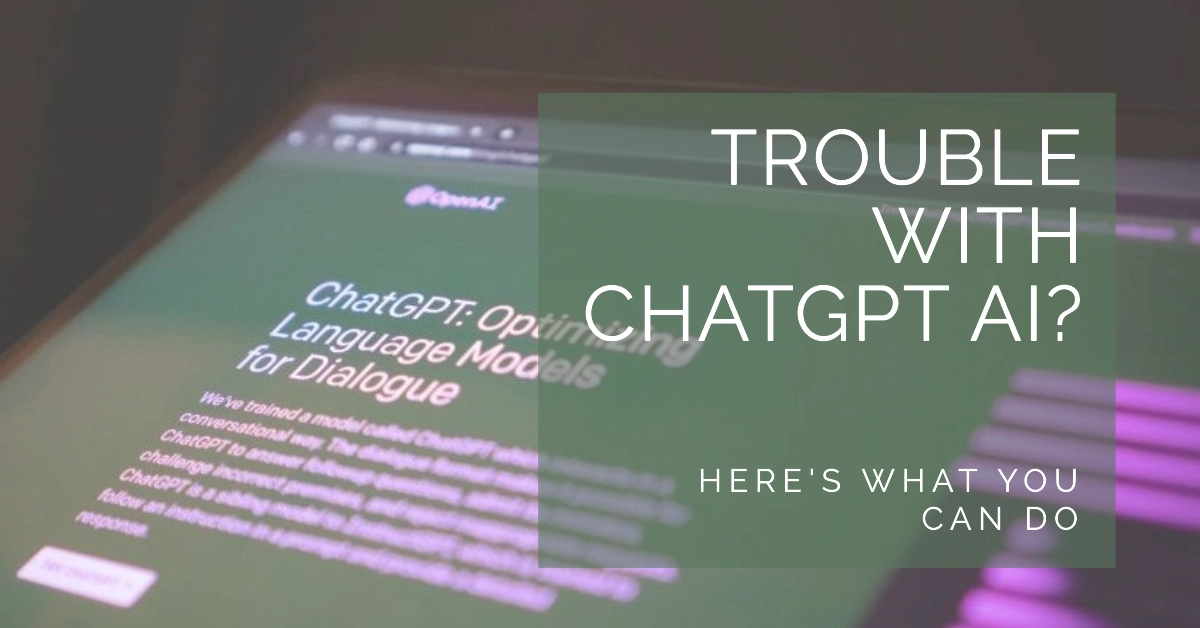ChatGPT is a powerful language model from OpenAI, renowned for its ability to generate remarkably human-like text. However, like any complex technology, it can sometimes malfunction or produce nonsensical responses. If you encounter ChatGPT acting erratically, this could be due to various reasons ranging from simple misunderstandings to more technical issues.
Don’t worry; this troubleshooting article will equip you with the steps to diagnose and resolve common problems with ChatGPT.
Understanding Why ChatGPT Might Produce Unexpected Outputs
Several factors can cause ChatGPT to act up and stop working as intended. Here are the common culprits:
Input Misinterpretation
ChatGPT relies heavily on the quality of your prompts. If your instructions are unclear, ambiguous, or contain errors, the model might misinterpret your intent and produce irrelevant or illogical responses.
- Example: Asking “What’s the history of cats on the moon?” might lead to factual information about cats, but the model won’t understand the impossibility of cats living on the moon.
Lack of Context
ChatGPT functions best when provided with enough context to understand your request. If you jump between topics or provide insufficient background information, it can become confused and produce strange outputs.
- Example: Suddenly asking “What about dogs?” without previously mentioning pets will likely confuse the model.
Technical Glitches
Like any software, ChatGPT can experience occasional bugs or glitches. These glitches might cause the model to generate garbled text, get stuck in repetitive loops, or produce responses that are completely off-topic.
Model Limitations
It’s important to remember that ChatGPT is not a sentient being. It’s a language model that learns from vast amounts of data. Sometimes, it may not have encountered sufficient examples of specific topics or language styles, leading to inaccurate or nonsensical responses.
Troubleshooting ChatGPT Errors
Follow these steps to eliminate common factors that may be causing problems to ChatGPT:
Step 1: Refine Your Input
- Check for Typos and Clarity: Ensure your prompts are free of spelling errors, grammatical mistakes, and confusing sentence structures.
- Provide Context: Give ChatGPT enough background information to establish the topic of your conversation.
- Rephrase: If your initial query doesn’t yield the desired result, try rewording your question or request in a simpler, more direct way.
Step 2: Reset the Conversation
- Start a New Chat: In your ChatGPT interface, start a new chat or conversation thread. This will clear the model’s previous memory and give you a fresh start.
Step 3: Report Bugs
- Feedback Mechanism: If you suspect a technical issue, use the available feedback mechanisms within the ChatGPT interface to report the problem. Provide details of the incorrect output and the steps that led to the issue.
Step 4: Consider Alternative Models
If ChatGPT consistently struggles with your prompts, explore other language models or AI assistants that might be better suited to your specific needs. Remember, the field of AI is constantly evolving.
Additional Tips
- Be Patient: Large language models are complex, and they sometimes need fine-tuning. Experiment with different prompts and provide constructive feedback to help the model learn.
- Set Realistic Expectations: ChatGPT is impressive but has limitations. Avoid asking overly complex, hypothetical, or nonsensical questions.
- Stay Informed: Keep up with updates and developments in the field of AI. As ChatGPT evolves, new features and fixes may address previous shortcomings.
Final Notes
While occasional glitches or unexpected outputs are possible, ChatGPT remains a valuable tool for communication, learning, and creativity.
By understanding the potential causes of strange responses and following these troubleshooting steps, you can effectively navigate any quirks and enjoy the full benefits of this powerful AI technology.
Frequently Asked Questions
1. FAQ: My ChatGPT responses are completely unrelated to what I asked. What should I do?
- Answer: This is likely a sign of unclear or ambiguous input. Double-check your question for typos or confusing phrasing. Try rephrasing your query in a more direct and straightforward way. Also, provide more context to help ChatGPT understand your topic.
2. FAQ: ChatGPT seems to get lost in the middle of a conversation. How can I help it stay on track?
- Answer: Restart the conversation or create a new chat instance to give it a fresh start. Ensure each of your prompts or questions builds upon the previous ones by providing relevant context cues within your input.
3. FAQ: Sometimes ChatGPT generates random strings of words or nonsensical sentences. Why does this happen?
- Answer: This could indicate a temporary technical glitch. Try refreshing the page or restarting the application. If the problem persists, use the feedback function to report the issue to the developers.
4. FAQ: ChatGPT doesn’t seem to understand a specific topic I’m interested in. Is there a solution?
- Answer: Remember that ChatGPT, like any language model, has its limitations. It may not have encountered sufficient training data related to your specific niche topic. Consider providing links to helpful resources for the model’s reference or try exploring alternative language models.
5. FAQ: I’ve tried all the troubleshooting tips, but the problem persists. Where can I get further help?
- Answer: Check if there’s a “Help” section or dedicated support resources provided within the ChatGPT interface or the developer’s website. You may find a community forum or a way to contact the development team directly for more assistance.
